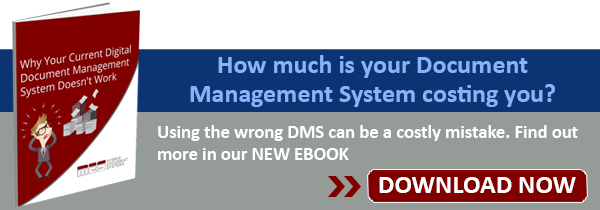
Many organizations are skeptical about going paperless. It may seem like a daunting task that requires significant change, as well as quite a bit of monetary investment. And in some cases, this is exactly what is required. However, often they fail to look at the other side of the equation; namely, what not going paperless is costing their business. Here are 3 horrible mistakes your business is making by not eliminating paper.
Mistake #1: Poor Customer Service
Even if you use paper, your customer service may in fact be quite good. But, if you still rely on paper documents, then it isn’t as good as it could be. Getting rid of paper helps you to reduce human error within the documents themselves, as well as errors that stem from a lack of proper organizational process (paper systems, obviously, don’t allow for any automation).
Furthermore, going paperless eliminates the risk of misplacing files and allows customer-facing employees to retrieve documents easily and quickly, meaning they can better field customer requests. Paper is typically filed in cabinets and has limited indexing capability; thus, when employees search for the documents they need to handle urgent requests, they must do so manually, which takes a lot of time. eliminating paper helps to mitigate this problem with a system that is more easily searchable and better suited for timely customer interaction.
Mistake #2: Higher Costs
While seemingly innocuous, paper systems actually cost quite a bit of money to maintain. In fact, they are even costlier than advanced systems and software. This is because it’s not just a matter of buying the paper (though this should be taken into account). First, your business must continue to buy filing cabinets – which take up a lot of office or store space – as the amount of data that needs to be stored grows. Considering that the average 4-drawer cabinet can cost $20,000 to fill, this is no small purchase.
And it’s not just the cost of physical storage that makes paper systems so expensive to maintain. Paper systems carry a number of less direct costs that happen to be far more costly to businesses. The administration and maintenance, for example, are labour and time intensive, which can kill productivity. Also, misplaced files can cost businesses an average of $120 per file, incurring significant costs when documents inevitably go missing due to poor organization. So while going paperless can carry a high upfront cost, in the long-term it ends up saving your company a lot of money.
Mistake #3: Weak Security
Paper systems offer very little in the way of security. There are physical locks on filing cabinets, and even cabinets that are fire-proof or have anti-theft measures, but these can still be broken into. Furthermore, because paper files need to be physically handled by the people using them, they are susceptible to being misplaced, left out on desks, etc., which effectively defeats any information security measures you may have in place.
Getting rid of paper allows your business to develop a more consistent, enforceable security process for your documents. You are able to set up a number of access restrictions and permissions; have the ability to backup all of your data off-site so that it is not lost if servers at your physical location are damaged; and depending on what software or system you use, you receive the added benefits of encryption and data security measures inherent therein.
These 3 points make a strong argument for going paperless, especially for businesses that have had misgivings about making the transition. Improved customer service, better security, lower costs and higher productivity are all benefits that can come with eliminating paper.

